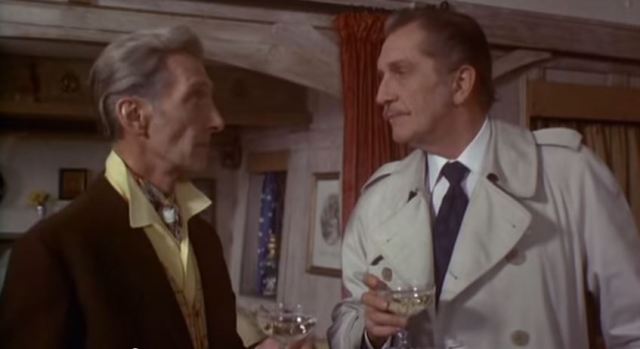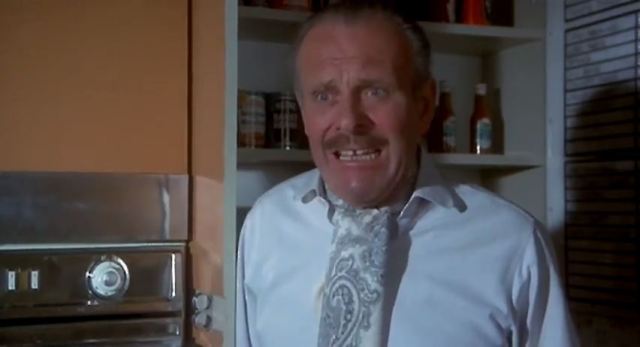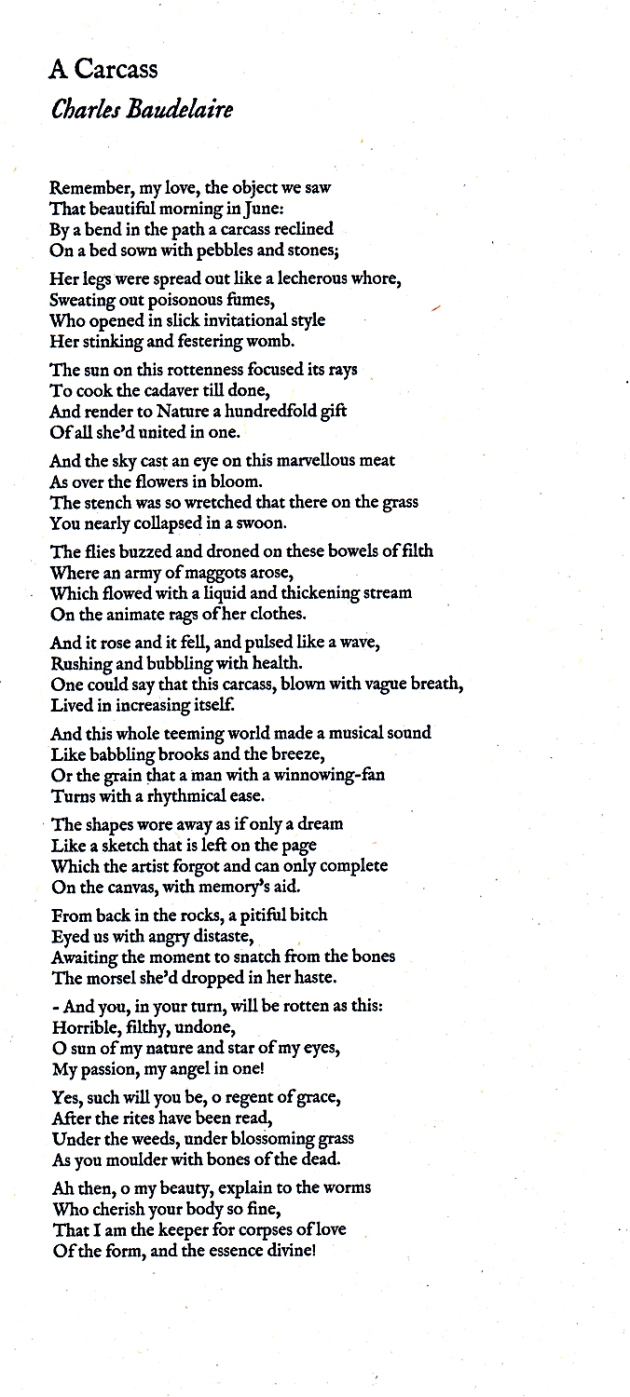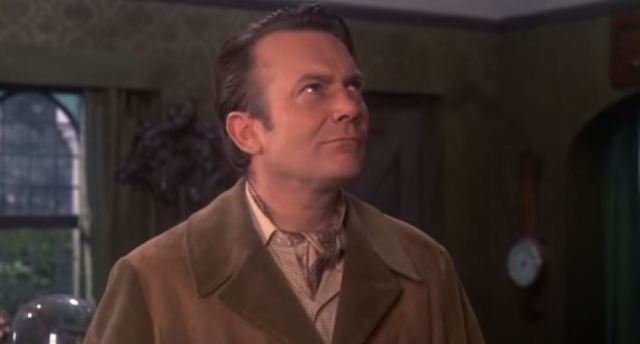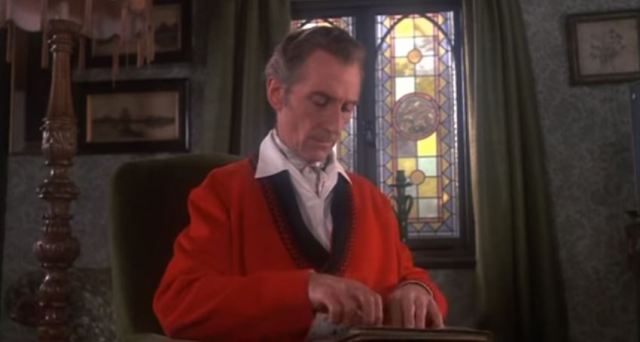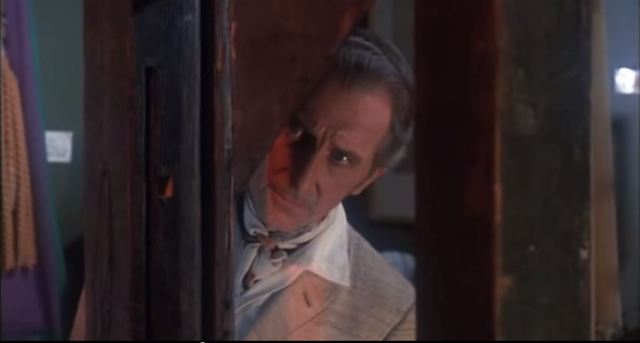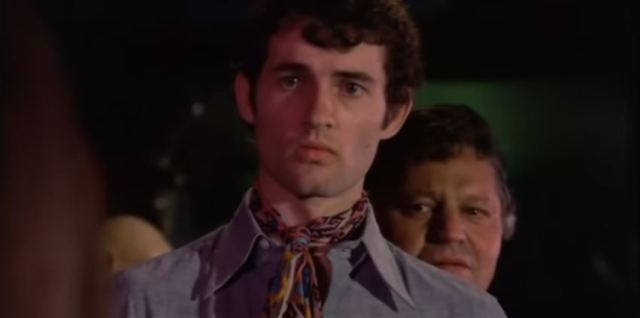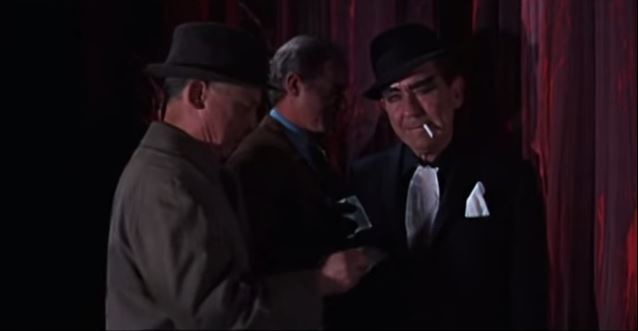Next up in The Dennis Wheatley Library of The Occult is volume six, The Sorcery Club by Elliott O’Donnell.
I’m sure that many of us have one or two O’Donnell books kicking about on our shelves, he was relatively prolific and his books were immensely popular in their day. Of course, he garnered his fame mainly through his non-fiction books concerning ‘real’ cases of supernatural occurrences, including his own experiences. Note the inverted commas around my use of the word ‘real’; this is not necessarily to dispute the authenticity of the cases O’Donnell researched, merely to highlight his propensity for heavily embroidering the truth.

The Sorcery Club is not one of O’Donnell’s non-fiction works but one of his early novels. First published in 1912, it is a Faustian piece relating the story of three down at heel chaps in San Fancisco who, quite by chance, come into possession of a 17th century occult tome by one Thomas Henry Maitland which gives directions for reviving an ancient Atlantean magic which would ultimately grant the user mastery over all things.
Note the name of the supposed author of that tome, Maitland. That may ring a few bells with some of you. Excuse me while I leave The Sorcery Club to one side for a moment and take this post on a bit of a diversion to the . . .
M A I T L A N D E N I G M A
In 1945 Weird Tales magazine published a short story by Robert Bloch called The Skull of The Marquis de Sade; this featured a protagonist named Christopher Maitland.
In 1965 Milton Subotsky adapted the Robert Bloch story for a film, produced by Subotsky and Rosenberg and released by their famed film company, Amicus. Peter Cushing played the role of Christopher Maitland.
In 1972 we have another Subotsky/Rosenberg film from Amicus, Tales From the Crypt, in which Ian Hendry plays Carl Maitland
In 1973, another Subotsky/Rosenberg film from Amicus, The Vault of Horror, has Michael Craig playing a Maitland.
In the same year, the same team have Guy Rolfe playing a Maitland in And Now the Screaming Starts.
And then in 1977 Subotsky gives us another Amicus style film, this time released by Rank, with The Uncanny. This one has a Mrs. Maitland played by Renée Girard.
So, why so many Maitlands? Although it’s not a particularly uncommon name, it is surely rare enough to suggest that this is not just mere coincidence. As we see on this list, the supposed Subotsky obsession with the name began with Blochs 1945 tale which Subotsky adapted in 1965. However, it gets a little more peculiar when we look at Subotsky’s 1960 Amicus film Horror Hotel, in which we have Tom Naylor playing a Bill Maitland!
Interestingly, going back to the 1977 film, The Uncanny, we see that the screenplay was written by Michel Parry. Parry, as we know, edited many horror anthologies and one of these was Christopher Lee’s Omnibus of Evil, which reprinted Bloch’s The Skull of The Marquis de Sade.
And of course, coming a little more up to date, we know that the film director Tim Burton is a huge fan of classic horror films, including British horror of the 1960s and 70s. We cannot help but wonder if this had some influence on the name of the dead husband and wife in his 1988 film Beetlejuice, Adam and Barbara Maitland. Although, Beetlejuice wasn’t written by Burton, it was written by Michael McDowell and Larry Wilson who also wrote several episodes of the 1990s US television show, Tale From the Crypt; this was obviously based on the old EC comic Tales From the Crypt which the 1972 Amicus film Tales From the Crypt was also based on! It all seems to get rather incestuous, doesn’t it?
Becoming aware of all these Maitlands does make a reader notice when a Maitland appears in a horror story and with O’Donnell’s tale being from 1912, this is the earliest appearance of a Maitland in a horror story I can recollect. O’Donnell’s has the 17th century author of the fictional tome of Atlantean magic as Thomas Henry Maitland. We do not know a great deal about him other than he was a Professor of English at a Swiss University and possibly somewhat of a seafaring adventurer; it was whilst being shipwrecked on an island that he discovered the original Atlantean documents.
So, did O’Donnell borrow the Maitland name, just like others seem to have done, or was he the progenitor of it? Well, of course, there was a relatively famous 19th Century occultist named Edward Maitland who we may consider as a source for O’Donnell’s seafaring sorcerer.
Like the fictional Maitland, the real Maitland was a well-travelled man. In the 1840s and 1850s he travelled from England to the Americas and was one of the ‘49ers in the California Gold Rush; following this he sailed around the Pacific and lived in Australia for a few years, before returning to England.
Like the fictional Maitland, the real Maitland was a man of letters; on his return to England he became an author and wrote several works of fiction and non-fiction.
Like the fictional Maitland, the real Maitland developed a fascination for occult knowledge. The fictional, as we stated earlier, discovered and translated an ancient Atlantean work of magic. The real Edward Maitland, along with his friend and collaborator Dr. Anna Kingsford, translated and published their own work of esoterica called The Virgin of the World; this was supposedly a translation of the teachings of Hermes Trismegistus.
Of course, this is all purely conjecture on my part. If O’Donnell did base his Maitland on Edward Maitland then it was very loosely; the fictional having lived 200 years prior to the real. But, it is nonetheless interesting . . . or is that just me?
E N D O F D I V E R S I O N
Anyway, getting back to the novel in question, what can we say about it? It’s a rather workmanlike, potboiler sort of affair. As I said, it opens with three men living in poverty in turn of the century San Francisco. Wheatley states in his introduction that the action takes placed during the “…great slump of the 1930s”. As the novel was first published in 1912 this would have been particularly prescient of the author, perhaps Wheatley was over-estimating O’Donnell’s abilities.
These three men come into possession of an ancient magical tome and their desperate circumstances lead them into carrying out the practices contained therein, despite being non-believers. Of course they summon a being, which they call ‘The Unknown’, who grants them various magical abilities for trial periods with certain applicable terms and conditions tucked away in the small print. Well, we all know what sticklers for bureaucratic procedure these lesser demons can be.
So, these three ne’er-do-wells soon become extraordinarily wealthy through their nefarious magical acts and decide to hotfoot it to England, where they set up in business as The Modern Sorcery Company.
The rest of the story is then taken up with The Modern Sorcery Company’s attempt to ruin the career of the most successful stage magician in the country (which is an interesting twist on the fashion at the time of stage magicians debunking people claiming real magical powers) and a rather ridiculous love triangle; although, thinking about it, there are more than three sides to the love triangle so perhaps a ‘love pentagram’ would be more fitting.
I won’t go into the plot any further, I really dislike spoilers, but I will say that this novel has one of the most abrupt endings I’ve ever come across. It’s like O’Donnell was boring himself with it, didn’t really know where to take the plot and just thought “Sod it, that’ll do” . . .
. . . and it ends.
~~~
As an afterword, I’ve read articles accusing O’Donnell of racism and sexism in his fiction, as was the case with many of his contemporary authors; such things were considered acceptable at the time. However, can this be the case with this novel? It is true that it has disparaging remarks about “all those born with back and red skins” and Hamar, the main villain of the piece, being Jewish, is described with all the grotesquery of a Nazi propaganda poster. It is also true that women are ill-treated in this novel, particularly those who are Suffragettes, who are invariably described as furious, hatchet-faced harridans. But, even taking these instances into consideration, can we consider O’Donnell’s writing to be racist or sexist when the whole novel is misanthropic? No one is considered worthy here; with the acceptance of the reality of magical acts making anything possible, all of humanity is revealed as stupid, greedy and selfish. The rich and the poor; male and female; the young and the old; scientists and spiritualists; politicians and the proletariat; O’Donnell treats them all with equal contempt. No matter what sort of philanthropic mask we wear to fool society, it is just that, a mask. As such, it does read as a misanthropic satire on Victorian/Edwardian society; an extremely clumsily handled one, but a satire nonetheless.












